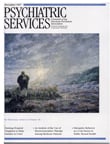Clinical Methods in Transcultural Psychiatry
This book has a global perspective on transcultural psychiatry. It does not focus just on major U.S. minority populations. Accordingly, I recommend it. As human migration increases and international business continues to grow, American psychiatrists will need to become more versed in transcultural psychiatry.
The text is chock-full of useful pearls and illuminating examples of how culture affects behavior and the treatment of mental illness. It includes meaningful paradigms that are easy-to-remember guideposts for transcultural psychiatric efforts. The book embodies the goals of transcultural psychiatry by seeking to explore the epidemiology of mental illness in different cultures, identifying cultural factors facilitating the development of mental illness, describing forms of treatment practiced in different cultures, and comparing different attitudes toward mentally ill persons in different cultures.
The book's first section provides an overview of transcultural psychiatry, explores the relationships between personality and culture, and addresses mental health aspects of voluntary and forced immigration. Given the large numbers of refugees who are at risk because of traumatic experiences, clinicians need to know how to assess, formulate, and treat patients who are culturally different from themselves.
Section 2 recommends, among other considerations, that practitioners attend to the cultural aspects of the spiritual realm. An outstanding chapter addresses mental health professionals' attitudes toward traditional healing. Curanderismo, espiritismo, santeria, umbanda, vodou, obeah, and Southern black rootwork are thoroughly explained. Further, the conceptual bases of alternative healing systems, covering natural, mystical, animistic, and magical causation, are discussed.
Also in this section is a unique, exemplary chapter on how New Zealand Maori adapt to mainstream Western medicine. Another commendable original chapter, focusing on psychiatry in an English inner-city community, gives some poignant examples of how the culture of poverty and religion influences behavior. A third novel chapter focuses on psychiatry in Arabian Gulf communities. These contributions illuminate the stark contrasts between American culture and other cultural contexts. They heighten our awareness of our own culture and how culture influences behavior and the practice of psychiatry in various contexts. Another outstanding chapter points out how different ethnic groups respond to various medications. The section concludes with a chapter by authors who are appropriately critical of Western psychiatry's disdain for religion as a negative influence on mental health.
Section 3 highlights the role of culture in psychiatric assessments and advises that the "patient's explanatory model" of the psychiatric problem be explored. Useful treatment approaches range from interpreting somatic symptoms using several different levels of meaning to establishing a therapeutic alliance across cultures. Section 4 has distinctive chapters on somatization patterns among Mediterranean migrants and on religion and magic in Italy.
The following section, on education and training, presents curricula for transcultural training of mental health professionals. DSM-IV cultural formulations are highlighted in hopes they will provide leadership for psychiatric residency education in transcultural psychiatry. Section 6 explains how children and families in cultural transition are influenced by differential rates of acculturation, culture clashes, culture-bound developmental myths, cultural adaptation, and a culture's impact on identity. A model of transcultural family therapy is provided.
The bottom line is that there is a lot to learn from this book.
Dr. Bell is clinical professor of psychiatry at the University of Illinois and president and chief executive officer of the Community Mental Health Council in Chicago.



